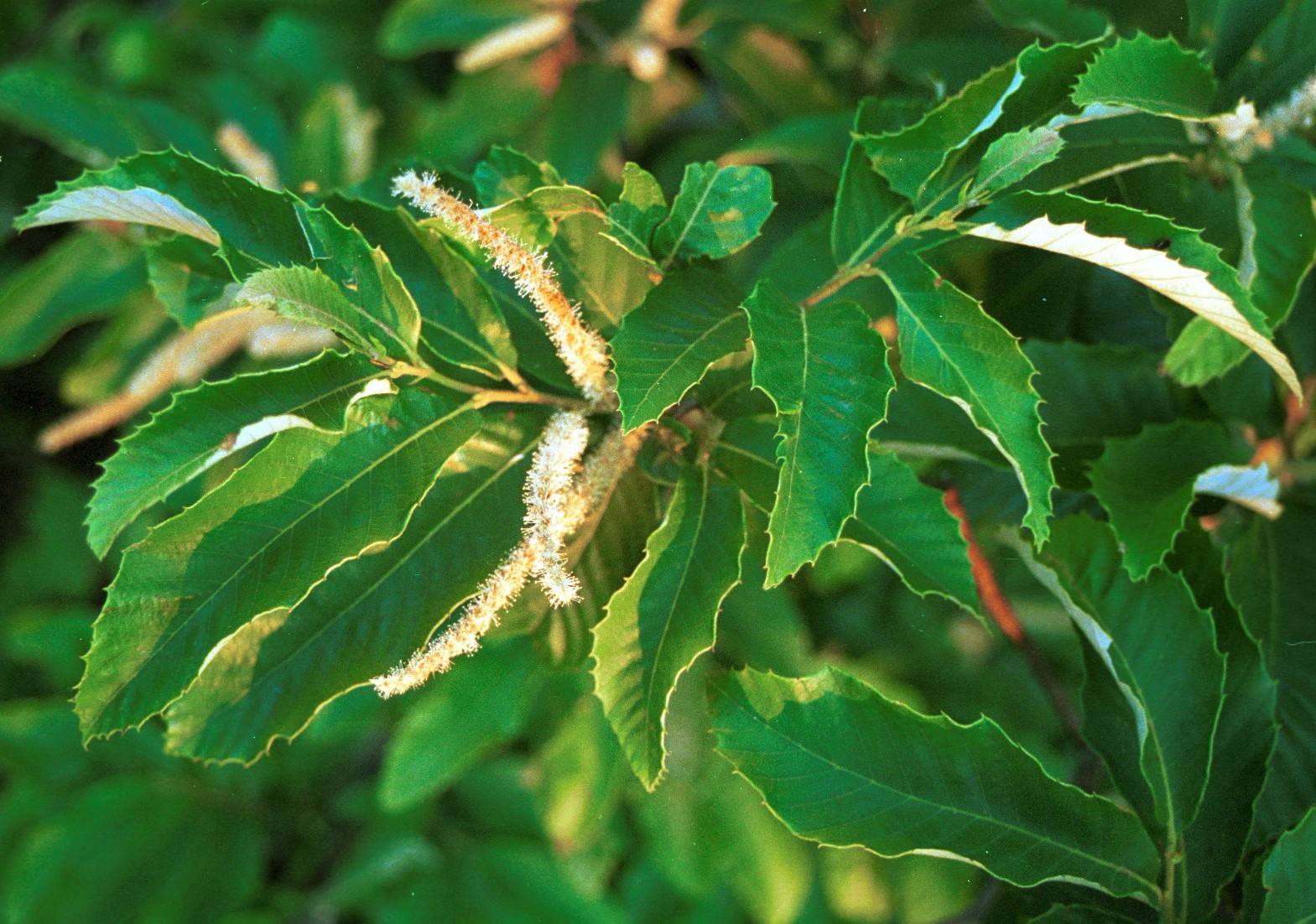
|
Family: Fagaceae |
Trees or shrubs , winter-deciduous, sometimes rhizomatous. Terminal buds absent, pseudoterminal bud (axillary bud of youngest leaf) ovoid, with 2 unequal opposite outer scales enclosing several imbricate inner scales. Leaves: stipules prominent on new growth, soon deciduous. Leaf blade thin, somewhat leathery, secondary veins unbranched, ±parallel, extending to margin, each vein ending in sharp tooth or well-developed awn. Inflorescences staminate or androgynous, axillary, spicate, erect, rigid or flexible; androgynous inflorescences with pistillate cupules/flowers toward base and staminate flowers distally. Staminate flowers: sepals distinct; stamens 12(-18), typically surrounding indurate pistillode covered with silky hairs. Pistillate flowers 1-3 per cupule; sepals distinct; carpels and styles typically 6(-9). Fruits: maturation in 1st year following pollination (termed annual by many authors); cupule 2-4-valved, valves connate marginally until maturity, ±completely enclosing nut(s), spiny, spines irregularly branched, often interlocking, densely or sparsely covered in simple hairs; nuts 1-3 per cupule, plano-convex, or if 3, then central nut often reduced and flattened, or if solitary, then often rounded in cross section, not winged, adjacent nuts not separated by internal cupule valves. x = 12. As evidenced by United States breeding programs, all species are probably interfertile (including American × Asian species). Local morphologic intergradation between species is to be expected.
|
This project was made possible in part by the Institute of Museum and Library Services [MG-70-19-0057-19].
Powered by Symbiota



